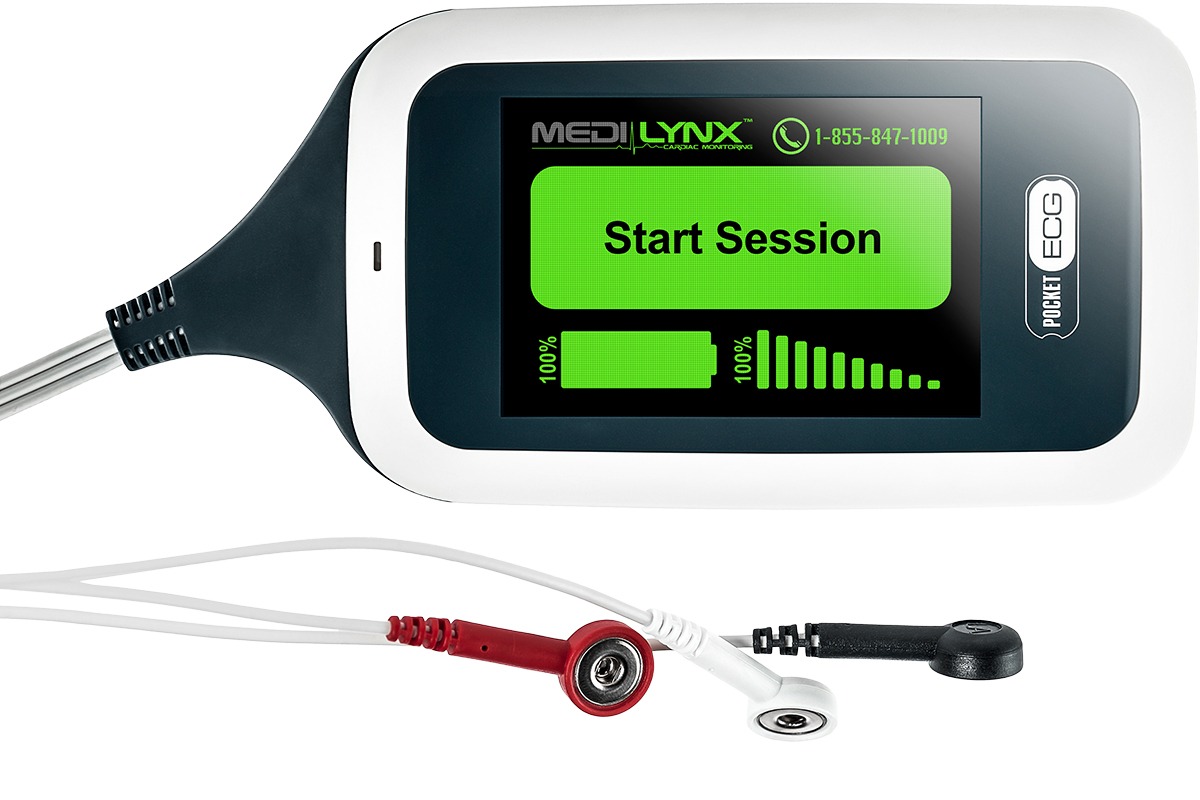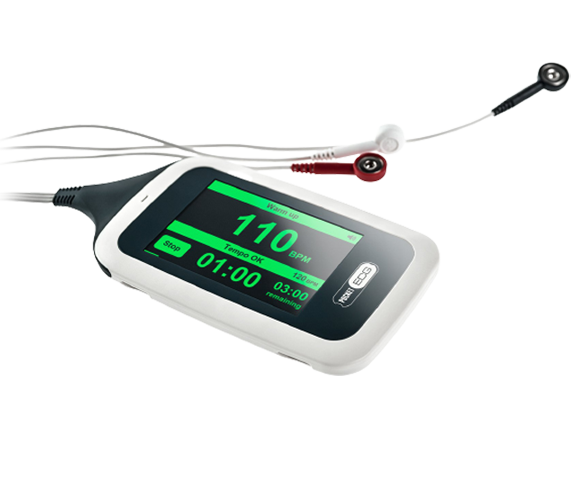Holter

The Holter Test availed by Radiance Health Care is done under the supervision of best in field cardiologists. We aim to perform the best Holter Test in Delhi, that's why we make sure that the final reports are error-free. In modern days' lifestyle, there are several heart patients, and not everyone can afford expensive treatment. That's why we intend to maintain nominal Holter Test price in Delhi Noida & NCR. Our in-budget Holter Test cost helps the patients overpower cardiac emergencies.
How It Works

Easy symptom reporting and a built-in motion sensor that automatically detects physical activity and when at rest.

Every heartbeat is wirelessly transmitted via nationwide carrier networks from a single device, eliminating the need to connect and reconnect to an external sensor.

Easy symptom reporting and a built-in motion sensor that automatically detects physical activity and when at rest.

Each PocketECG comes with two rechargeable batteries, which can be easily changed in a matter of seconds.

PocketECG was intentionally designed as a three-lead system, much like telemetry units used in hospitals.
The strategic placement of the leads generates a clear view of all parts of a heart rhythm waveform, giving physicians the detailed electrocardiogram (ECG) they need to diagnose even the most difficult to identify arrhythmias.
A Holter monitor is a small, wearable device that keeps track of your heart rhythm. Your doctor may want you to wear a Holter monitor for one to two days. During that time, the device records all of your heartbeats.
A Holter monitor test is usually performed after a traditional test to check your heart rhythm (electrocardiogram), especially if the electrocardiogram doesn't give your doctor enough information about your heart's condition.
Your doctor uses information captured on the Holter monitor to figure out if you have a heart rhythm problem. If standard Holter monitoring doesn't capture your irregular heartbeat, your doctor may suggest a wireless Holter monitor, which can work for weeks.
Some personal devices, such as smart watches, offer electrocardiogram monitoring. Ask your doctor if this is an option for you.
Why it's done
If you have signs or symptoms of a heart problem, such as an irregular heartbeat (arrhythmia) or unexplained fainting, your doctor may order a test called an electrocardiogram. An electrocardiogram is a brief, noninvasive test that uses electrodes taped to your chest to check your heart's rhythm.
However, sometimes an electrocardiogram doesn't detect any irregularities in your heart rhythm because you're hooked up to the machine for only a short time. If your signs and symptoms suggest that an occasionally irregular heart rhythm may be causing your condition, your doctor may recommend that you wear a Holter monitor for a day or so.
Over that time, the Holter monitor may be able to detect irregularities in your heart rhythm that an electrocardiogram couldn't detect.
Your doctor may also order a Holter monitor if you have a heart condition that increases your risk of an abnormal heart rhythm. Your doctor may suggest you wear a Holter monitor for a day or two, even if you haven't had any symptoms of an abnormal heartbeat.
Risks
There are no significant risks involved in wearing a Holter monitor other than possible discomfort or skin irritation where the electrodes were placed.
However, the Holter monitor can't get wet, or it will be damaged. Don't swim or bathe for the entire time you're wearing your Holter monitor. However, if you have a wireless Holter monitor, you'll be shown how to disconnect and reconnect the sensors and the monitor so that you can shower or bathe.
Holter monitors aren't usually affected by other electrical appliances. But avoid metal detectors, magnets, microwave ovens, electric blankets, and electric razors and toothbrushes while wearing one because these devices can interrupt the signal from the electrodes to the Holter monitor. Also, keep your cellphones and portable music players at least 6 inches from the monitor for the same reason.
How you prepare
If your doctor recommends Holter monitoring, you'll have the device placed during a scheduled appointment. Unless your doctor tells you otherwise, plan to bathe before this appointment. Most monitors can't be removed and must be kept dry once monitoring begins.
A technician will place electrodes that sense your heartbeat on your chest. These electrodes are about the size of a silver dollar. For men, a small amount of hair may be shaved to make sure the electrodes stick.
The technician will then connect the electrode to a recording device with several wires and will instruct you on how to properly wear the recording device so that it can record data transmitted from the electrodes. The recording device is about the size of a deck of cards.
You'll be instructed to keep a diary of all the activities you do while wearing the monitor. It's particularly important to record in the diary any symptoms of palpitations, skipped heartbeats, shortness of breath, chest pain or lightheadedness. You'll usually be given a form to help you record your activities and any symptoms.
Once your monitor is fitted and you've received instructions on how to wear it, you can leave your doctor's office and resume your normal activities.
What you can expect During the procedure
Holter monitoring is painless and noninvasive. You can hide the electrodes and wires under your clothes, and you can wear the recording device on your belt or attached to a strap. Once your monitoring begins, don't take the Holter monitor off — you must wear it at all times, even while you sleep.
While you wear a Holter monitor, you can carry out your usual daily activities. Your doctor will tell you how long you'll need to wear the monitor. It may vary from 24 to 48 hours, depending on what condition your doctor suspects you have or how frequently you have symptoms of a heart problem. A wireless Holter monitor can work for weeks.
You'll be asked to keep a diary of all your daily activities while you're wearing the monitor. Write down what activities you do and exactly what time you do them. Also write down any symptoms you have while you're wearing the monitor, such as chest pain, shortness of breath or skipped heartbeats.
Your doctor can compare data from the Holter monitor recorder with your diary, which can help diagnose your condition.
After the procedure
Once your monitoring period is over, you'll return the device to your doctor's office, along with the diary you kept while you wore the Holter monitor. Your doctor will compare the data from the recorder and the activities and symptoms you wrote down.
Results
After your doctor has looked at the results of the Holter monitor recorder and what you've written in your activity diary, he or she will talk to you about your results. The information from the Holter monitor may reveal that you have a heart condition, or your doctor may need more tests to find out what may be causing your symptoms.
In some cases, your doctor may not be able to diagnose your condition based on the results of the Holter monitor test, especially if you didn't have any irregular heart rhythms while you wore the monitor.
We always do our best to serve our patients, but there are a few details we respectfully ask you to plan a Holter test at your home with our device which is approved by FDA, USA.


